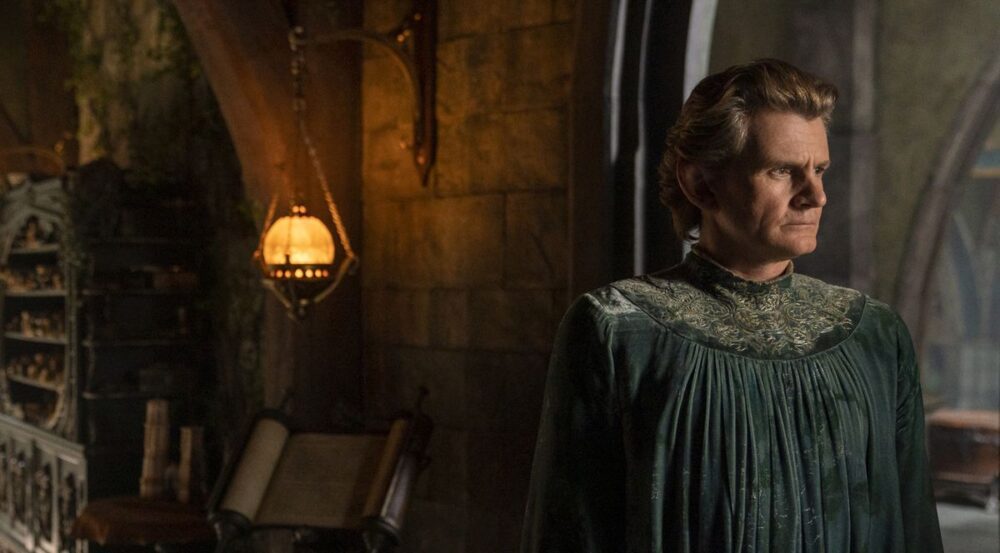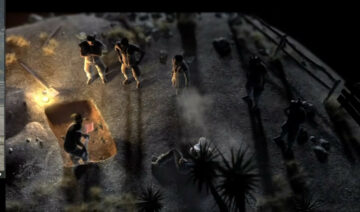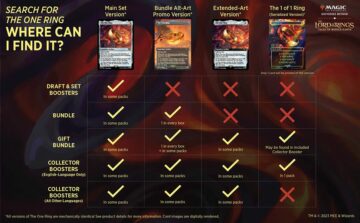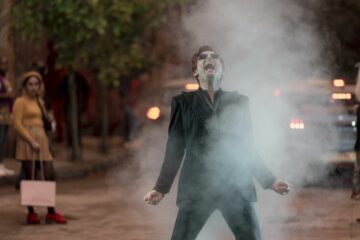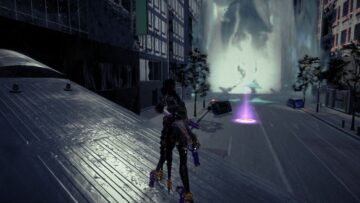The Lord of the Rings: The Rings of Power makes good on its title in the final episode of its first season, but it also may have left fans with a lot of questions about what happens next. What does one do with a Ring of Power once you have it? How did all this play out in the books?
And the most important question of all: Who’s actually gonna own this magical jewelry? They’ll have to start planning a wardrobe update.
[Ed. note: This piece contains spoilers for The Lord of the Rings: The Rings of Power episode 8.]
Photo: Ben Rothstein/Prime Video
The finale of Rings of Power’s first season dramatizes the forging of the three elven Rings of Power in succinct fashion. A bit of mithril, a bit of Valnorian gold and silver, a few gems, and boom: You’ve got Vilya, Nenya, and Narya, the legendary artifacts themselves.
The episode ends soon after, however, and with it the season. If we want to anticipate the events of season 2 and further, we have to go to the source: Tolkien.
What powers do the three elven rings have?
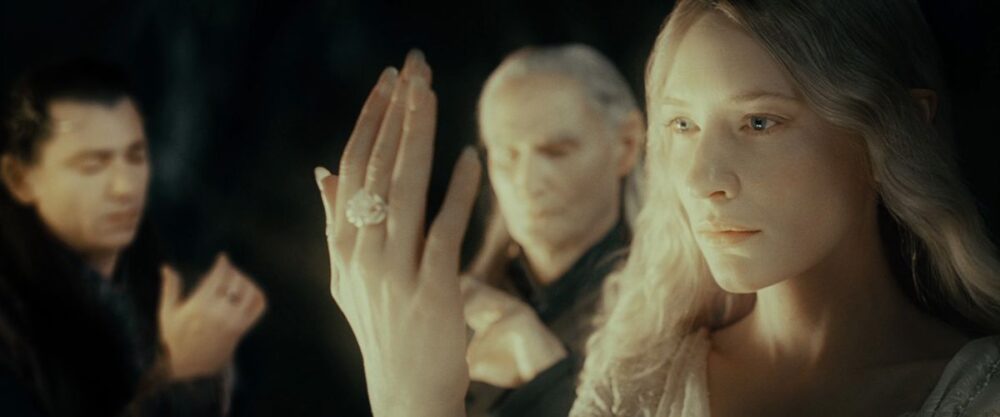
Image: New Line Cinema
There’s a bit of a bait-and-switch with the Elven Rings, for modern viewers at least. Vilya (the sapphire ring), Narya (the ruby ring), and Nenya (the adamant ring, which alone of all of them was made of mithril) are all named for the elves’ “principal elements” of the world: air, fire, and water.
But they don’t have elemental powers at all.
As Elrond explains in The Fellowship of the Ring, “They were not made as weapons of war or conquest: that is not their power. Those who made them did not desire strength or domination or hoarded wealth, but understanding, making, and healing, to preserve all things unstained.”
It’s pretty close to the reasons for their forging in The Rings of Power: Celebrimbor and Elrond sought a solution to the deadly corruption their people faced in Middle-earth. And, as the Silmarillion says, “those who had [an elven Ring] in their keeping could ward off the decays of time and postpone the weariness of the world […] where they abode there mirth also dwelt and all things were unstained by the griefs of time.”
But the elven Rings had a pretty big drawback. Sauron’s hand in their forging left them vulnerable to his own One Ring. Again from The Silmarillion: “While he wore the One Ring he could perceive all the things that were done by means of the lesser rings, and he could see and govern the very thoughts of those that wore them.”
Thankfully, due to the power of the elven rings and their bearers, this flaw was realized the moment Sauron put on his ring for the first time, creating a window for the bearers to see into his intentions to rule them and all that was theirs. They solved this problem quite easily by simply taking the rings off.
Once Sauron was defeated and the One Ring was lost, it became safe to wield the elven rings again for their intended use: preserving pockets of Middle-earth from the wastes of time and the world’s slow decay. (Why was the world decaying? Tolkien was Catholic.)
How were the elven rings made in the books?
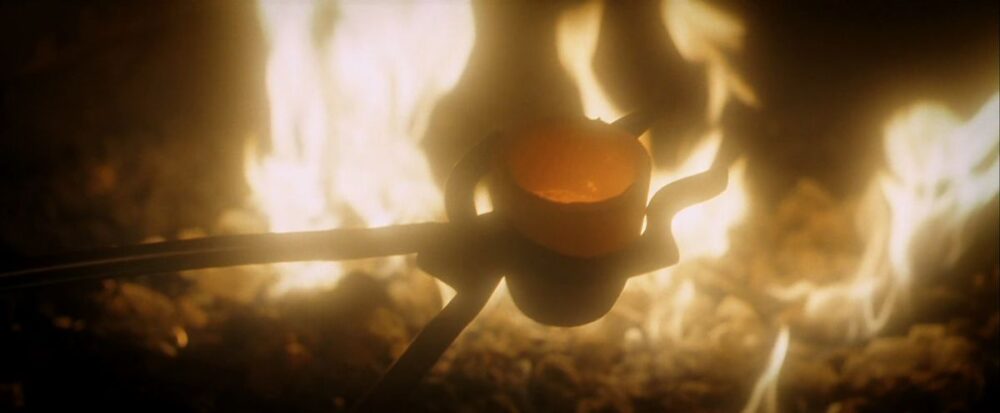
Image: New Line Cinema
Early in the Second Age, after the defeat of Morgoth, Sauron appeared to the elves of Lindon and Eregion in a “fair-seeming” guise, calling himself Annatar and claiming to be an emissary of the Valar — so already you can tell this is a little bit different from Rings of Power.
In fact, in Tolkien’s The Silmarillion, both Gil-galad and Elrond immediately distrusted Annatar, refusing him entry to Lindon. Unfortunately, Celebrimbor was totally down for it. Sauron preyed on the Noldorim elves’ love of Middle-earth, the land they had defended for so long, and their conflicting desire to return to the splendor and bliss of their homeland. The Silmarillion says that he argued, “Wherefore should Middle-earth remain for ever desolate and dark, whereas the Elves could make it as fair as Eressëa, nay even as Valinor?” and encouraged them to devise ways in which to convert and preserve their surroundings.
As Elrond tells it in The Fellowship of the Ring, the smiths of Eregion “received his aid and grew mighty in craft, whereas he learned all their secrets, and betrayed them, and forged secretly in the Mountain of Fire the One Ring to be their master. But Celebrimbor was aware of him, and hid the Three which he had made.”
Yes, you read that right: By the time the elven Rings were forged, Celebrimbor had already figured out not to trust Sauron. The Silmarillion states pretty clearly that the rings “were forged by Celebrimbor alone, and the hand of Sauron had never touched them.” Still, Celebrimbor had learned enough of his craft from Sauron that the elven Rings were unavoidably subject to the One Ring.
When the bearers of the elven Rings took them off in defiance of Sauron’s will, he rallied the armies of Mordor to conquer Eregion and take them by force, and when that didn’t work he made the Seven and the Nine, dealing them out to the dwarves and men.
Rings never really worked on the dwarves, because they “proved tough and hard to tame,” according to The Silmarillion. “[Dwarves] ill endure the domination of others, and the thoughts of their hearts are hard to fathom, nor can they be turned to shadows.” It didn’t allow Sauron to control the seven dwarf bearers, merely to increase their base emotions, like greed, and indirectly help the great dwarven civilizations into ruin and dragon-fire.
Men, howeve,r proved much easier to corrupt and control; we all know what a nazgul is.
Who keeps the elven rings?
When Sauron began his war on the elves for the elven rings, Celebrimbor split the rings up for safekeeping. He sent Nenya to Galadriel, Vilya to Gil-galad, and Narya to Círdan (the leader of the faction of elves that lived on the western coast of Middle-earth, closest to Valinor, and built all the boats that sailed west and never came back). But with the exception of Galadriel’s Nenya, the rings wouldn’t stay with those owners.
Gil-galad eventually gave his ring to Elrond, before he perished with Elendil in Sauron’s defeat, and Círdan eventually gave his to Gandalf for reasons you can just read about here.
“Thus it was,” The Silmarillion says, “that in two domains the bliss and beauty of the Elves remained still undiminished while that Age endured: in [Rivendell]; and in Lothlórien […] where the trees bore flowers of gold and no Orc or evil thing dared ever come.”
But Sauron’s hand in the creation of the elven rings means that their power was, at least in part, dependent on Sauron’s existence. This was among the reason that Bilbo’s mere rediscovery of the One Ring was something of a death knell to elves on Middle-earth. Whether Sauron found the ring or the Ring was destroyed, the elven Rings would have been rendered unusable.
This is why Elrond and Galadriel sail over the western sea at the end of The Return of the King — they sacrificed their power to hold back the tides of time and keep Middle-earth as it was during their youths, to preserve at least two places in Middle-earth where elves can live unburdened lives, in order to keep Sauron from gaining total dominion.
What does this mean for Rings of Power season 2?
If things follow the progression of Tolkien’s lore — which Rings of Power has not always done! — what happens next is a period of tense calm, as Sauron holes up in Mordor to gather his armies and forge the One Ring. In the books, that takes a decade, but with Rings of Power condensing Sauron’s manipulation of Celebrimbor into forging the elven Rings to a mere three weeks, we can probably expect it to happen faster.
Then, once the One Ring is on Sauron’s finger, the elves defy him — throwing Middle-earth back into war with a dark lord, with the men of Númenor on their side. And that certainly seems like something Rings of Power will want to have its own cinematic take on.
